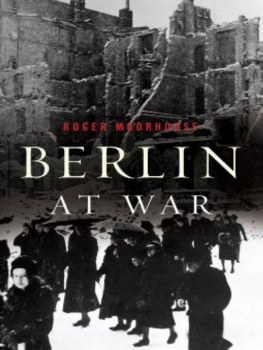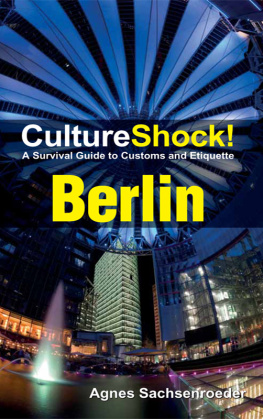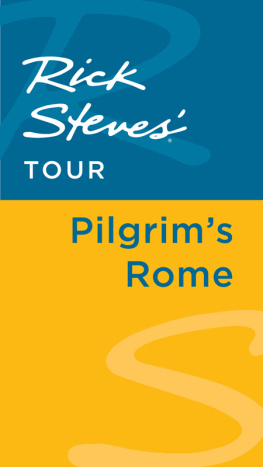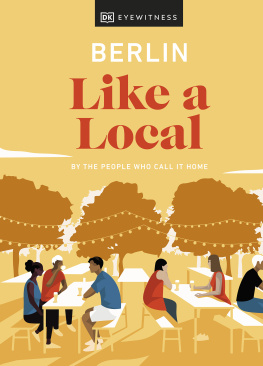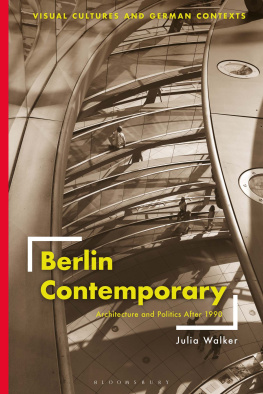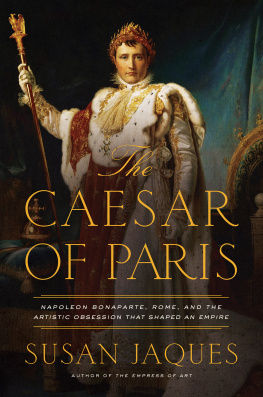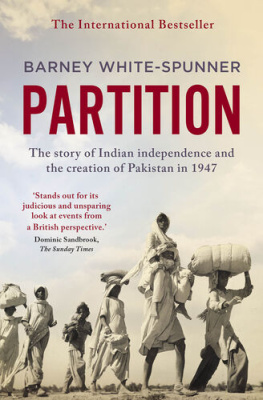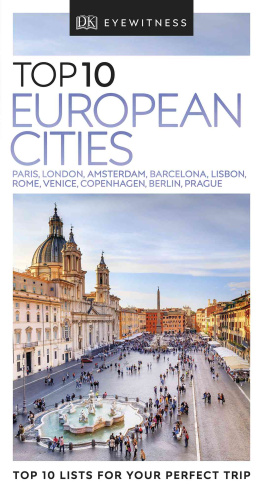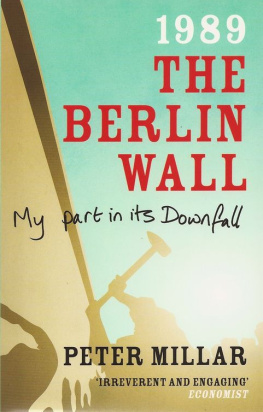Contents
Guide
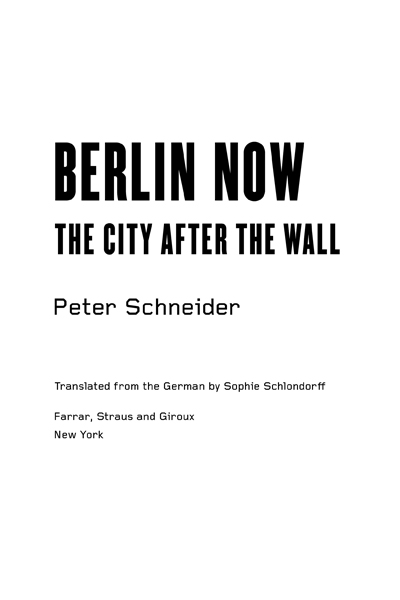
The author and publisher have provided this e-book to you for your personal use only. You may not make this e-book publicly available in any way. Copyright infringement is against the law. If you believe the copy of this e-book you are reading infringes on the authors copyright, please notify the publisher at: us.macmillanusa.com/piracy.
CONTENTS
CINDERELLA BERLIN
It isnt all that easy to answer the question of why, for some time now, Berlin has been one of the most popular cities in the world. Its not on account of its beauty, for Berlin is not beautiful; Berlin is the Cinderella of European capitals.
Gazing out from a roof deck here, you wont see anything like the domes of Rome, the zinc roofs of Paris, or the architectural canyons of New York. There is nothing spectacular, in any way excitingor even atrociousabout the view. No pool on the seventy-second floor, no palm garden at a dizzying height, no penthouse casino high above the rooftops promising an exhilarating plunge from the terrace to the gambler who has just suffered an unbearable loss. What unfolds before the viewer is a homogenous cityscape of four-to-six-story buildings whose red pitched roofs didnt originally come equipped with penthouses or sumptuous roof decks. It was only thirty years ago, not long before the fall of the Wall, that West Berliners discovered that life above the citys chestnut and linden trees was significantly better than life in their shadow. Tentatively, they began to carve windows and terraces into the roofs. This is where they now dwell, at a modest height, between the occasional hotel and office high-rise, whose architecture on the whole seems to have been inspired by a shoe box stood on its end. To the west, the Eiffel Towers little brother, known as the Funkturm (Radio Tower), rises above the sea of buildings; to the east, the 1,207-foot-tall Fernsehturm (TV Tower) glimmers on the horizon, the afternoon sunlight etching a gleaming cross into its steel spheremuch to the ire of its communist builders, who erected the tower to prove the victoriousness of socialism. Quick-witted Berliners christened the luminous cross the Popes revenge. The apparition proved as intractable as it was inexplicablenothing could be done to get rid of it. It presaged the future: the end of the German Democratic Republic.
Those living in the new city center, Mitte, had to wait for Berlins two halves to be reunified before converting their attics. Admittedly, they have the better view. They look out onto several metropolitan icons: the gilded dome of the reconstructed synagogue near Hackescher Markt and, beyond that, the Reichstag, its historical weight lightened by Sir Norman Fosters addition of a glass dome, and the restored horse-drawn chariot of the Brandenburg Gate, swept clean of the dust of the East German era. Even farther in the distance, Helmut Jahns circus tent and the towers of Renzo Piano and Hans Kollhoff rise from what used to be Berlins most prominent vacant lot, Potsdamer Platz.
Yet, to date, no urban climber has deemed any of these new high-rises worthy of scaling. No Philippe Petit has thought to stretch a cable between the office towers at Potsdamer Platz and to balance back and forth across it. A city in which a new, 389.8-foot-tall hotel (the Waldorf Astoria) sets a record for height is not exactly a magnet for extreme athletes. Compared to the skylines of Manhattan, Chicago, or even Frankfurt, Berlins newly populated horizon still comes across as the silhouette of a provincial capital. In every other way as well, seen from above, Berlin lacks everything that makes a big city. It has no financial district like Manhattan or London, no venerable, centuries-old cathedral like Cologne or Paris, no notorious nightlife district like Hamburg. Even Berlins Eiffel Towerthe aforementioned Radio Toweris merely a modest copy of the Paris original.
A friend of mine from Rome, the writer Edoardo Albinati, told me about his first time in Berlin. In the 1990s, he got off a train at the Zoo station in former West Berlin and took a look around. What he saw was the bleak station square with its currency-exchange offices and snack bars, the war-damaged steeple of the Gedchtniskirche (Kaiser Wilhelm Memorial Church), the Bilka department store with its decorative faadeonce considered boldof crisscrossing diagonal parallel lines, the Zoo Palast movie house emblazoned with a painted poster of an American action film. Yet, no matter where he turned, no soothing arch, dome, steeple, or faade presented itself for his spoiled Italian eyes to rest on. The way the square turned his gaze back on himself was the only thing that struck him as noteworthy. A few walks around the city tempered his opinion somewhat, but it never gave way to a sense of well-being. Berlin, he confessed to me with a polite smile, was by far the ugliest capital he had ever seen.
Now, however, tens of thousands of Italians flock to Berlin every year, filling the streets of the northern metropolis with the melodious sounds of their language. On New Years Eve, when temperatures are in the teens outside and the locals prefer to stay at home in front of the TV, hordes of Italian tourists swarm to the Brandenburg Gate to usher in the New Year with Berlins famous fireworksforbidden in Rome! And when natives of New York, Tel Aviv, or Rome ask me where Im from and I allude to Berlin, their eyes instantly light up with curiosity, not to say enthusiasm. Without the slightest hesitation, theyll go on to tell me about their most recent or upcoming trip to Berlinyet wont be able to tell me why they have fallen in love with this city of all places. They may bring up the ritual word beautiful, but it doesnt really capture what it is that attracts them to the city. Mention the name of any other, far more beautiful European city and you wont get the same reaction.
If beauty isnt the point, then what is? When I ask any twentysomething, irrespective of nationality, the answer is obvious. Berlin is the only major city without a mandatory closing time, where you can eat and/or get wasted for ten to twenty euros, and where the S-Bahn will get you to any club, even at four in the morning. Is that it? Not entirely. Part of Berlins appeal also seems to be its historyboth the good and the atrocious: Berlin, the world metropolis of the 1920s, home to an international bohemian crowd; Berlin, the capital of the Third Reich, where the most egregious crimes of the last century were hatched; Berlin, the Wall city, divided for twenty-eight years before finally being reunified. Hardly any other city has experienced such extreme transformation in the last hundred years.
It is a truly astounding oversight that city officials failed to ensure that a thirty-yard section of the border areaincluding the watchtowers, dog runs, and mine-strewn death strip secured on the East Berlin side by a rear wall known as the Hinterlandmauer was preserved for posterity. After all, the average tourist doesnt come to hear the Berlin Philharmonic play or to go to the Pergamon Museumhe wants to see the Wall. The Wall is quite simply Berlins most famous monumentthe German counterpart to the Statue of Liberty!
On the other hand, to be fair to the authorities, protecting even the tiniest section of the Wall in the wild days after November 9, 1989, would have been impossible. For weeks, tens of thousands of Berlin natives and visitors from around the world laid into the monstrosity with hammers and chisels. What would they have said if police had cordoned off a section of the Wall, under orders to protect it as a designated landmark? With what images and headlines would the international media have met such an attempt? Something along the lines of: EAST GERMAN BORDER TROOPS GIVE UPWALL NOW GUARDED BY WEST BERLIN POLICE!



